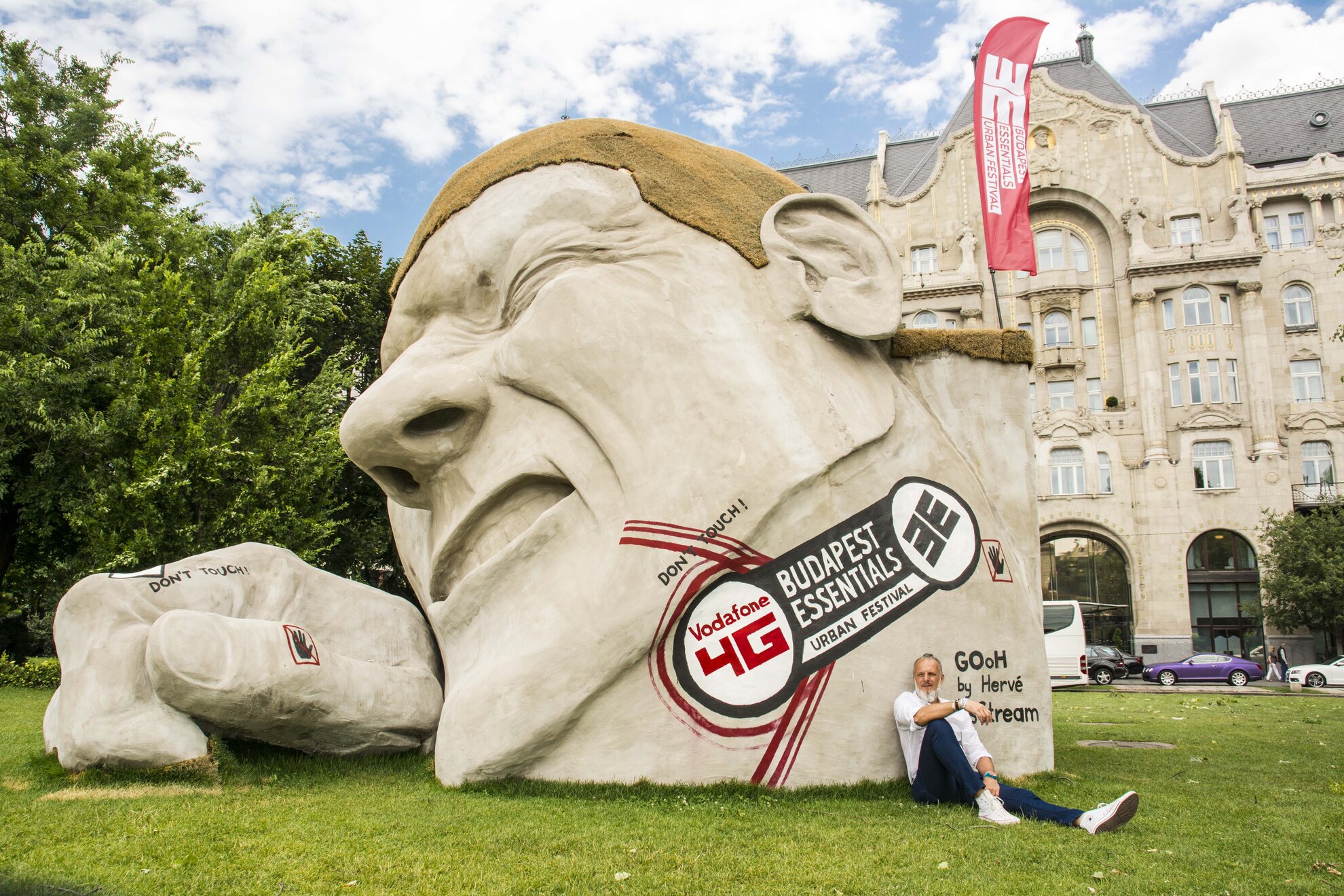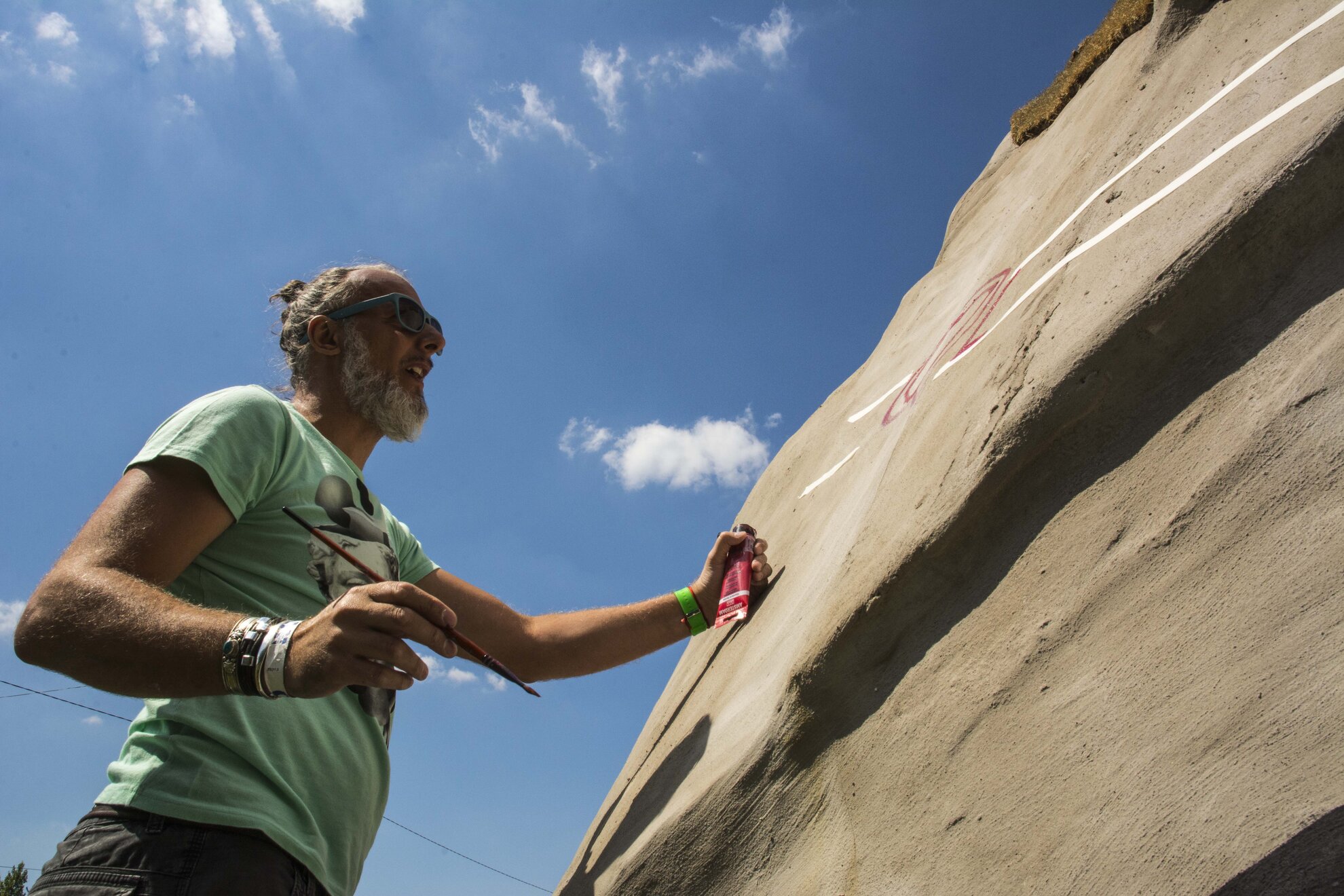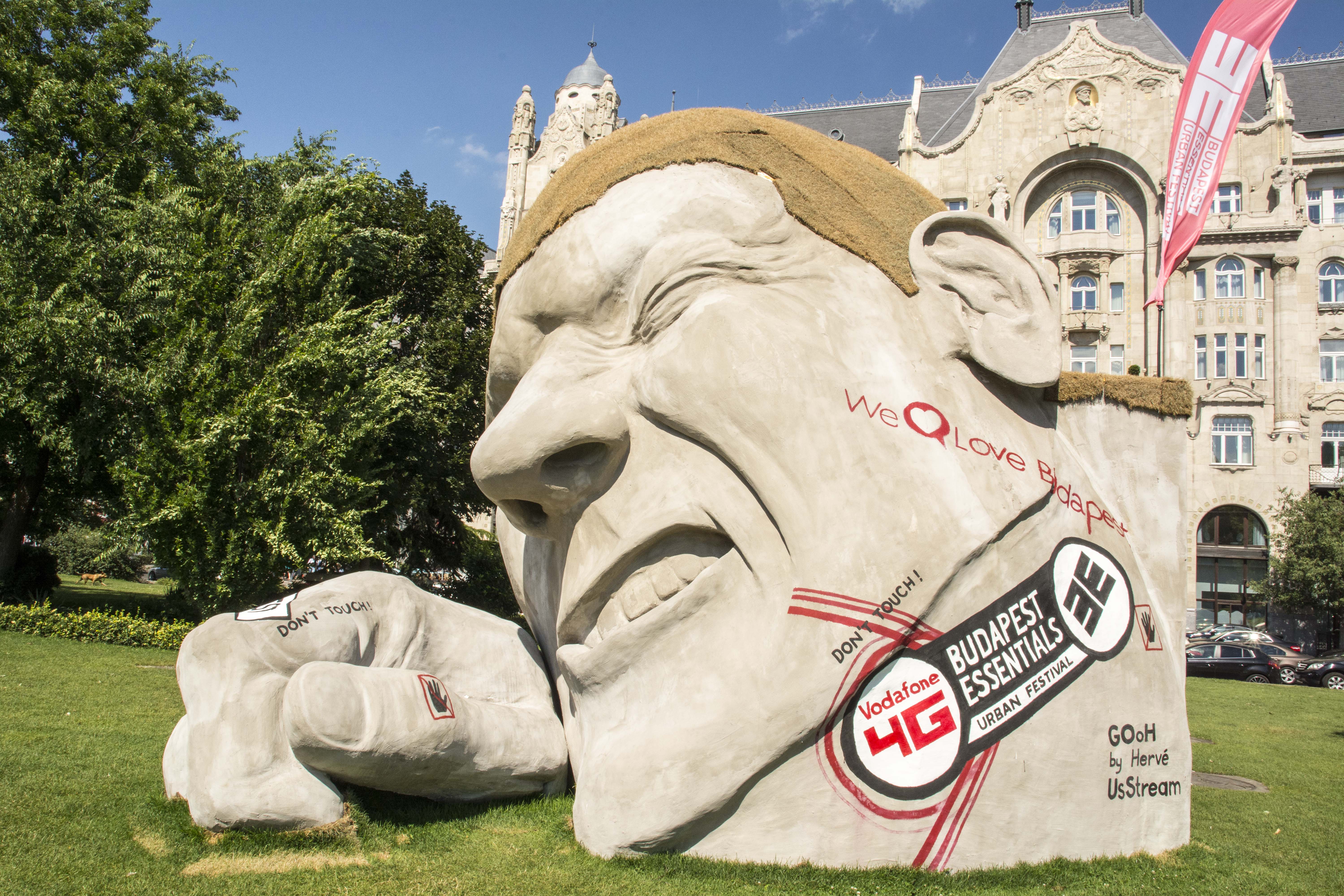Last summer, the city was in a state of shock when a huge statue seemed to crawl out of the ground at Széchenyi Square, the open space on the Chain Bridge’s Pest side. Once again, Hungarian artist Ervin Lóránt Hervé created an oversized sculpture here this year – many passersby do not know what to make of the monumental artwork, so they only take selfies with it, but we decided to dig a little deeper into the story and ask the creator to help us interpret his latest work. At the end of our talk, we could even paint the logo of We Love Budapest on the giant’s face.
We Love Budapest: Please tell us what the statue represents. It probably is not just a man shooting a slingshot.
Ervin Lóránt Hervé: This is the continuation of last year’s sculpture, titled “Feltépve” (“Ripped Up”), and is titled “Repost”. This year, it was created for the Budapest Essentials festival with the aim of being a reflection of the city. Similarly to the previous creation, this one also connects to Budapest, but has developed in the way it communicates with people: there is an auditorium in the side of the statue, by which this artwork is not just a sculpture, but a communication-community space, where visitors can become part of the whole thing, too. Whoever uploads their selfie of video on the web will get on the inside walls, and anyone will be able to look at these pictures. For the time being, this is in a testing phase, but we are about to launch the project.

WLB: How did you come up with the idea of making giants at public spaces?
ELH: In addition to visual arts, I also worked with galleries. I realized that people rarely visit exhibitions, either because they cannot afford to or they do not have the time, and streetsculptures do not interest them. I thought about something to lure them there, and that is when monumentality came into the picture, since the bigger something is, the more it arouses interest. This might be due to the fact that largeness could always be linked to community events, sacrificial rituals and leadership, and thus was an integral part of people’s lives. This is how “Feltépve” was born with the help of Dr. Miklós Somogyi, in connection with Art Market Budapest; we created the sculpture as a self-financing project.

WLB:
What is it made of?
ELH:
It is made from a Styrofoam base, and with exterior façade of plaster. It is pretty durable, but cannot stand very strong physical exposure. The pieces are several tons structurally, so the wind does not blow them away. How much time it took to set up should remain a secret.
WLB:
What exactly does the gentleman aim at with his non-existent slingshot?
ELH:
He aims at nothing; as you can see, there is no rock in his hand, and he kind of making the peace sign, too. It does not carry any political message, it is just art. The point of “Repost” is that we are here, and we want to be here, and we can communicate about culture, slingshots, or even peace. That is the essence of art. Although if you look into the arch of the Chain Bridge, it looks as if he shot through it, but there is no specific target.

WLB:
Whose face is it anyway? Can it be linked to a particular person?
ELH:
According to the Italians, it depicts Berlusconi. It makes sense, but that was not the goal. It is a completely random face; I did not model it after a particular person.

WLB:
How does this great interest in your work make you feel?
ELH:
Naturally, it is a great feeling, and then again, “Feltépve” did not become the best public sculpture in 2014 by coincidence. According to Ustream’s statistics, more than ten million people viewed it with an 11-minute average viewership, which is a big thing. In addition, it has 1.8 million likes. This is not all that surprising, as the sculpture was made for tourism purposes at a highly visible location. On weekends, large crowds pass by here.

WLB:
Future plans?
ELH:
Later on I would like to make a sculpture that crawls into the ground instead of crawling out, and of course, I could go as far as to connect it to buildings, or even winding around a lamppost. The point is that it should not stand by itself, but connect to the city in some way. Although I think this is substantially typical of contemporary art – it should be part of everyday life.




